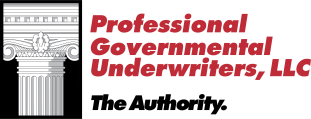Successes and Struggles of Charter Schools

The Challenges of Charter School Facilities
August 3, 2021
The Importance of Physical Wellness for Police Officers
August 30, 2021Successes and Struggles of Charter Schools
The first time the idea of charter schools was floated in the education policy sectors was in 1988. Three years later, the first law surrounding charter schools passed with bipartisan support. The number of charter schools continues to rise every year, and as of the 2018/2019 school year, there are 7,427 in existence in 44 U.S. states as well as Puerto Rico and Guam. In the past 30 years, these special schools had plenty of opportunities to grow, with some valued lessons learned along the way and continued growth opportunities.
Understanding the Charter School Structure
Many people — including those who work in the education sector and insurance brokers who work with K-12 clients — do not quite understand the difference between a charter school and a traditional public school. Charter schools are public education institutions serving K-12 students. However, school districts do not govern these schools. Instead, they are operated by private, non-profit boards or individuals. Charter schools are based on the concept that innovation and competition can drive education quality higher.
Like traditional public schools, charter schools provide a free education for students. Any family can send their children to a charter school if there are openings. When there are more applicants than available openings, a lottery determines who is accepted, ensuring equal access for students from all income brackets and backgrounds. Government entities oversee these schools, and they must adhere to performance standards.
Celebrating Successes
From the inception of the first laws governing charter schools, these regulations have garnered broad, bipartisan support. It is one area of government that consistently sees Republicans and Democrats at national and state levels come together. This alone is a significant achievement. Additionally, these schools continue to offer free education to all who attend, and they continue to operate as public schools. In 2018, 3.3 million students, representing 7% of the public-school population, attended a charter school. Charter schools can celebrate achievements that include:
- High rates of success for underachieving, ethnic minority and poor students
- Higher student performance for all students in well-run charter schools
- Improved education models through research and development
- New forms of education governance
Charter schools can tick off many successes, but there is still room for improvement.
Recognizing the Struggles
One major lesson that has come out of these past 30 years is that the charter school designation is not an automatic path to high-quality education for students. Additionally, while examples of innovation exist, charter schools have also fallen into the trap of homogeneity in education delivery, with many schools providing similar delivery models and programs.
Charter schools currently struggle in two other areas that leave room for growth. In the first, the record of bipartisan support is showing signs of erosion that must be stopped before a complete divide occurs. Second, a divide exists between traditional public schools and charter schools, which prevents collaboration and cooperation that could benefit all children, regardless of what school they attend.
About PGUI
Professional Governmental Underwriters, Inc., is a full-service risk management company dedicated to assisting public, educational and non-profit entities in the management of their professional liability exposures including educators liability insurance. We are dedicated to providing state-of-the-art professional underwriting management and loss control advisory services on behalf of our designated carriers. For more information, call us toll-free at (800) 586-6502.


